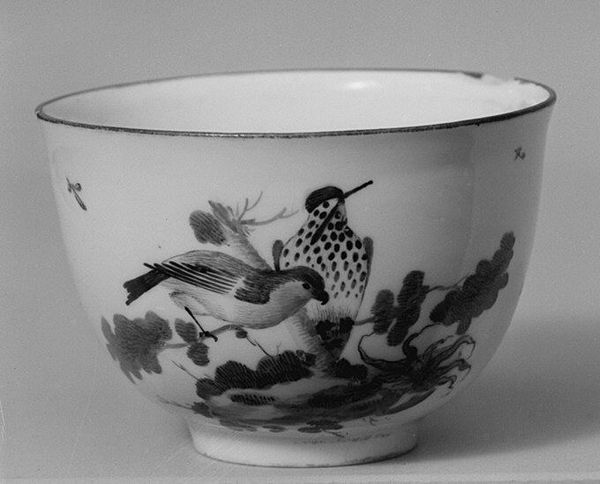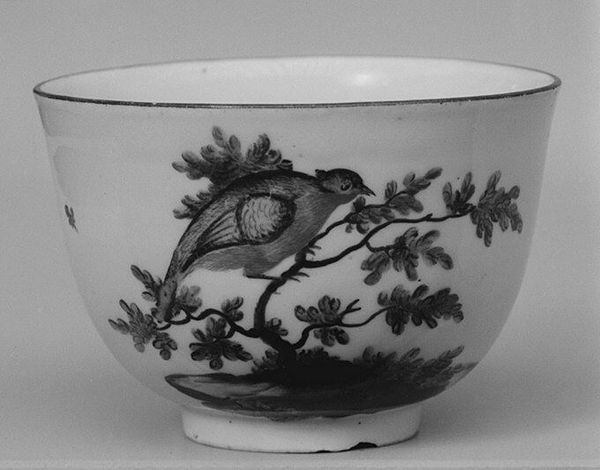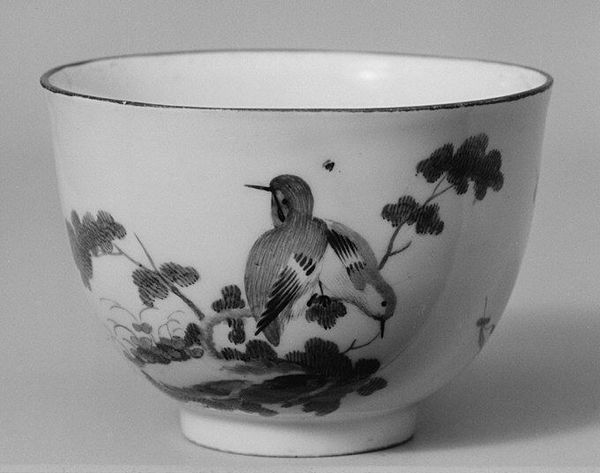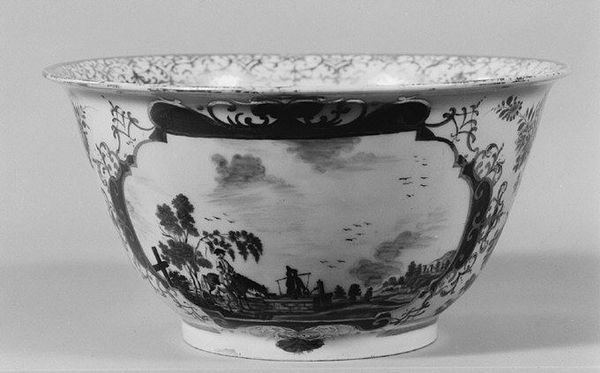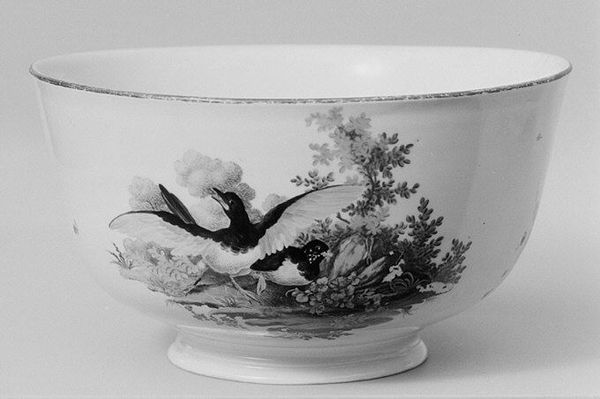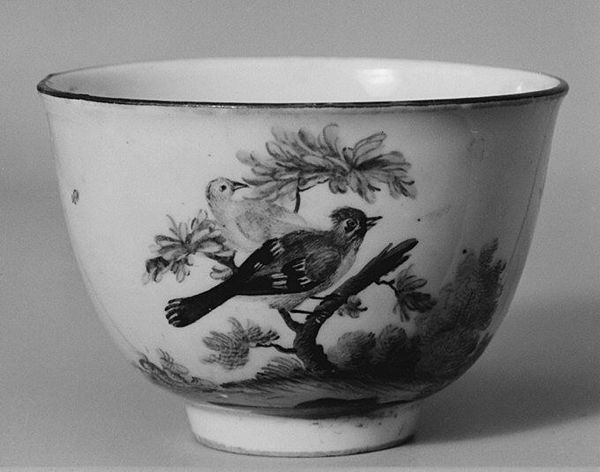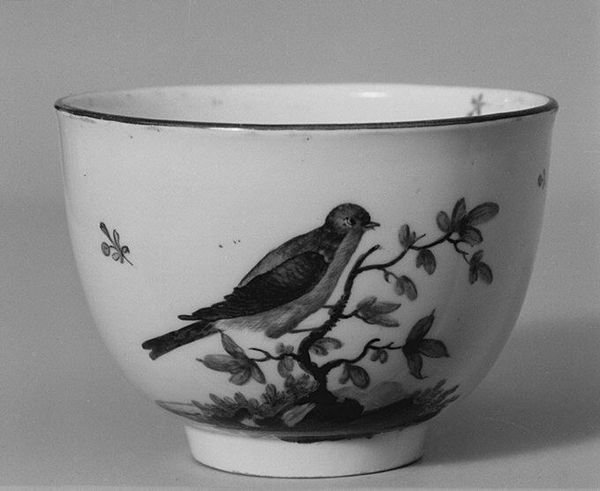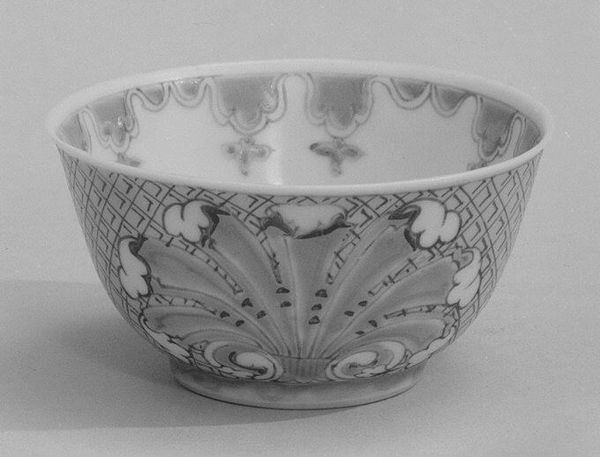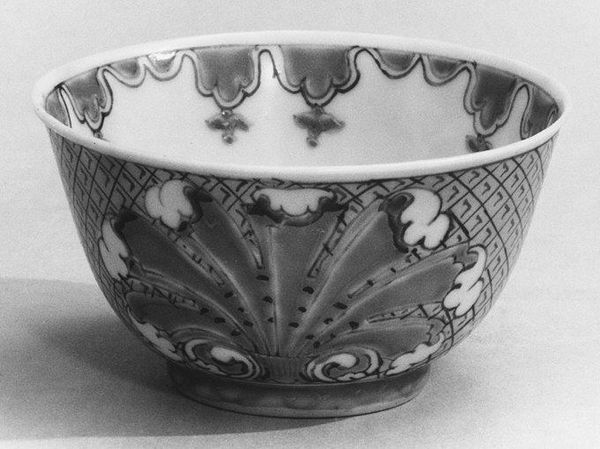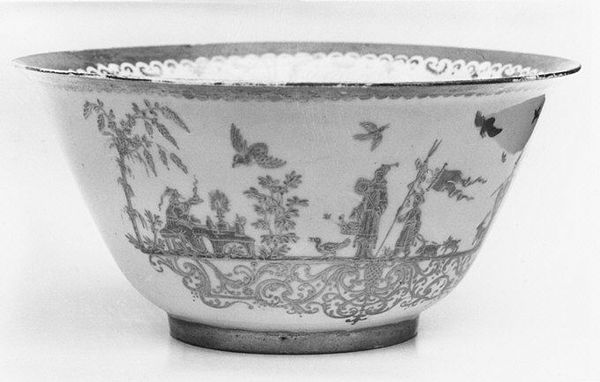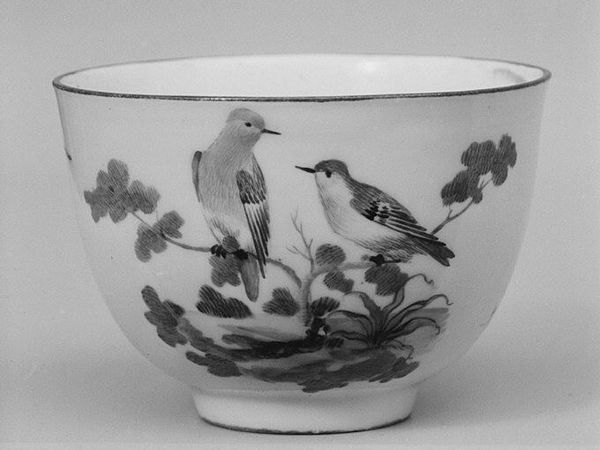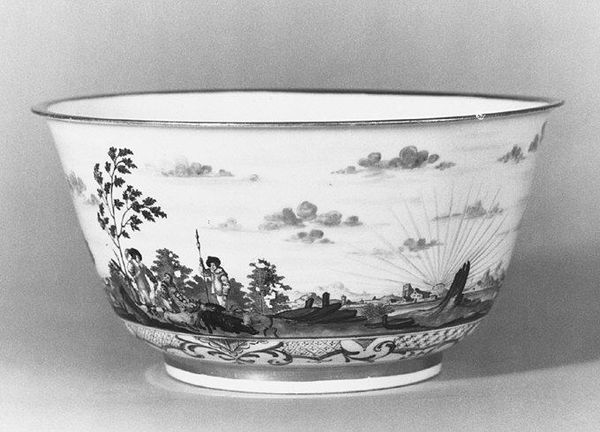
Cup (part of a service) 1765 - 1775
0:00
0:00
drawing, ceramic, porcelain, sculpture
#
drawing
#
ceramic
#
bird
#
porcelain
#
sculpture
#
decorative-art
#
rococo
Dimensions: 2 × 2 7/8 in. (5.1 × 7.3 cm)
Copyright: Public Domain
Curator: Here we have a cup, part of a service produced by the Frankenthal Porcelain Manufactory sometime between 1765 and 1775. Editor: My first impression is that of delicate craftsmanship. The sparse use of black ink on the white porcelain lends it a light, airy quality. It feels very... Rococo, in its sensibility. Curator: Precisely! Frankenthal, backed by the Elector Palatine Carl Theodor, aimed to capture that very spirit. Porcelain became a medium through which power and taste were asserted. This particular service likely graced the table of someone keen to display their refined appreciation for naturalistic, yet stylized, design. Editor: Note how the painter renders the birds. Each one is meticulously depicted. The play of light and shadow on their plumage creates an incredible sense of depth given the minimalist palette. The cup is successful because the artist understands line and volume. Curator: Indeed. The presence of avian motifs signals a broader eighteenth-century fascination with the natural world—although carefully curated and often idealized, of course. Royal patronage helped disseminate those ideals and values beyond aristocratic circles. Porcelain factories became essential sites for propagating these beliefs through material culture. Editor: Do you see the very fine craquelure along the side? And just there along the rim. It lends this piece a subtle sense of age and a fragility that emphasizes its beauty, for me. Curator: And that it survived offers a poignant insight into the object's perceived value through decades of changing aesthetic values. This "Cup" provides a valuable lens into the production, dissemination, and consumption of status in pre-Revolutionary Europe. Editor: What began as a quick study in elegant design leads into avenues of thought, which, despite its domestic functionality, reflect back the cultural history, political ambition and design choices that give objects permanence far beyond its intended use.
Comments
No comments
Be the first to comment and join the conversation on the ultimate creative platform.
